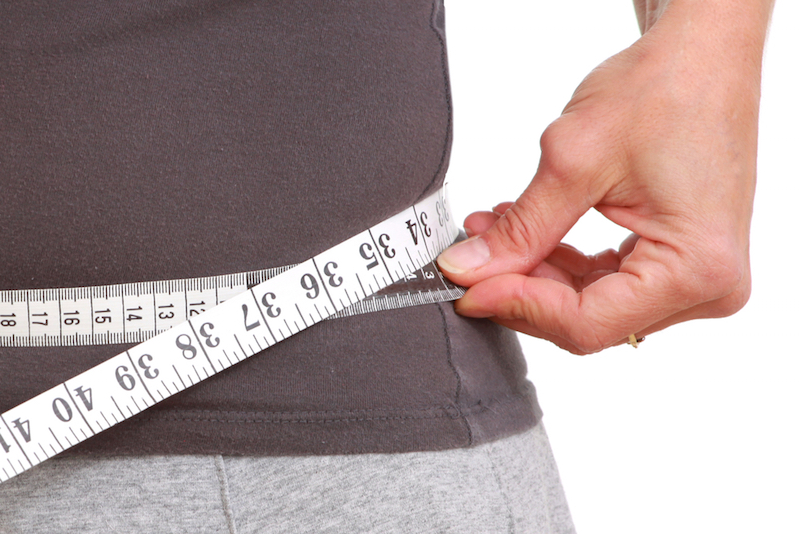A 35-Inch Waist and Your Health: What's the Link?

In reaction to model Ashley Graham gracing the cover of Sports Illustrated's latest swimsuit issue, former Sports Illustrated cover girl and supermodel Cheryl Tiegs sounded not so positive about women with larger waistlines.
"I don't like it that we're talking about full-figured women, because it's glamorizing them, and your waist should be smaller than 35 [inches]," Tiegs said in an interview with E! on the red carpet of the 13th Annual Global Green USA pre-Oscar party. She has since clarified her response in a letter published by The Huffington Post, explaining that she did not mean to attack Graham personally and that she, herself, has a 37-inch waist.
Celebrity feuds aside, Tiegs' reaction left many people curious about whether a 35-inch waist is a true marker of health. Experts say that, as with most medical guidelines, the facts are complicated.
"Like any type of clinical cutoff, it's the result of these larger-scale studies," said Dr. Bruce Y. Lee, director of the Global Obesity Prevention Center and associate professor of international health at Johns Hopkins University, in an interview with Live Science. "Any cutoff is not an absolute, hard cutoff. It's not as if someone at 34.9 is different from someone at 35.1."
Rules of thumb like this one represent data that's often distilled from thousands of people, and are meant as generalizations, Lee said. [Your Heart Health: 5 Numbers to Know]
In the case of the 35-inch waist, the number gained substantial support from a study published in Circulation that used data from the large and long-running Nurses' Health Study, which followed a group of nearly 45,000 U.S. women over 16 years.
The finding was published in 2008. The women in the study who had waists larger than 35 inches had almost double the risk of dying from heart disease, compared with those whose waists were under 28 inches, the researchers said.
Sign up for the Live Science daily newsletter now
Get the world’s most fascinating discoveries delivered straight to your inbox.
And the women in the study who had the largest waist circumference also had a much higher risk of dying from cancer or any other cause, than women with the smallest waists. All of the health risks increased steadily as waist circumference increased.
Too much fat around the waist, which researchers sometimes call "central obesity," is also associated with an increased risk of developing type 2 diabetes and hypertension, Lee said.
The average waist size of U.S women ages 20 and over is 37.5 inches, according to the Centers for Disease Control and Prevention.
No one is sure why abdominal fat is more problematic for health than fat elsewhere in the body, but it does seem to act differently. Some experts have suggested that these fat cells around the waistline may interfere with the normal balance of hormones, negatively affecting insulin sensitivity, blood sugar and blood pressure.
As a result of this and other research, the American Heart Association and the National Heart, Lung, and Blood Institute tell people to aim for a waist circumference smaller than 35 inches for women, and 40 inches for men.
The International Diabetes Foundation goes further, setting a waistline goal of 31.5 inches for European women and 37 inches for European men. The groups' recommended waist sizes for Asian populations are slightly smaller, and it has yet to gather enough data to set specific standards for other ethnic groups.
So should you panic if you measure 37 inches around the middle? Probably not, said Lisa Harnack, professor and co-director of the University of Minnesota Obesity Prevention Center, in an interview with Live Science. "There are actually quite a few risk factors for heart disease and type 2 diabetes, and this is just one of them," she said. [The Best Way to Lose Weight Safely]
Waist circumference is one of many measures of health and, similar to body mass index (BMI), it can't tell us much on it's own. "The real issue is that each of these measurements is only a single view into the person," Lee said.
He likened singular health measurements to a pinhole in a box where the patient is inside. Each only allows a small view into the person's overall health, and no single measurement can show all the important information.
Both Harnack and Lee agreed that people can be overweight and healthy, just as people can be thin and unhealthy. However, going back to the general rule, a person's health will very likely be improved if he or she falls within the guidelines for a healthy waist circumference, they said.
Follow us @livescience, Facebook & Google+. Original article on Live Science.









